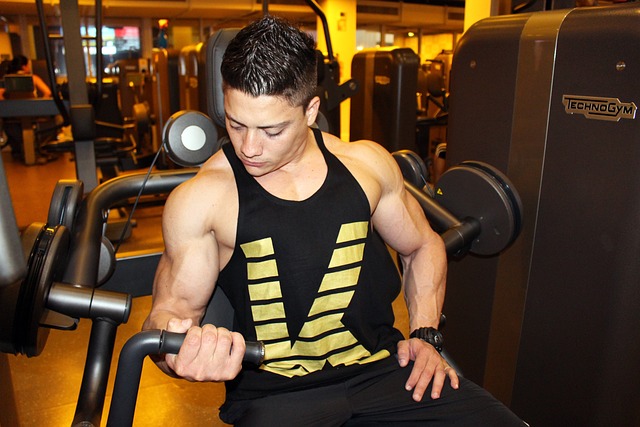In the realm of fitness, two terms often arise: strength training and bodybuilding. While they might seem similar at first glance, they entail different objectives, techniques, and outcomes.
What is Strength Training?
Strength training concentrates on improving overall strength and functional fitness levels. It involves lifting weights to improve muscle strength, endurance, and power.
Benefits of Strength Training
Strength training offers numerous benefits beyond just muscle growth. It enhances bone density, promotes fat loss, improves posture, and boosts metabolism.
Common Strength Training Exercises
Common strength training exercises include squats, deadlifts, bench presses, and rows. These compound movements engage multiple muscle groups simultaneously, promoting overall strength development.
What is Bodybuilding?
Bodybuilding, on the other hand, is a sport and lifestyle dedicated to maximizing muscle size, symmetry, and definition. It involves rigorous training, strict nutrition, and sculpting the body to achieve a desired aesthetic.
Objectives of Bodybuilding
The primary goal of bodybuilding is to achieve muscle hypertrophy and sculpt a visually impressive physique. Competitors aim for symmetry, proportion, and low body fat levels.
Common Bodybuilding Techniques
Bodybuilding techniques often revolve around high-volume workouts, focusing on specific muscle groups with isolation exercises like bicep curls, tricep extensions, and leg extensions.
Goals and Objectives
Strength Training Objectives
Strength training primarily aims to enhance functional strength for everyday activities and sports performance.
The objective of strength training is not just muscle growth but also improving overall physical capabilities, such as lifting heavy objects or performing tasks with ease.
Bodybuilding Goals
In contrast, bodybuilding prioritizes muscle hypertrophy and aesthetic development.
Bodybuilders aim to sculpt their bodies to achieve maximum muscle size, symmetry, and definition, often for competition or personal satisfaction.
Strength Training Approach
Strength training typically involves lower repetitions with heavier weights to build strength and power.
The focus is on lifting near-maximum loads for fewer repetitions, aiming to increase muscle strength and neural adaptations.
Bodybuilding Approach
Conversely, bodybuilding employs higher repetitions with moderate weights to induce muscle hypertrophy and promote muscle endurance.
Bodybuilders often perform sets with moderate weights for higher repetitions to create muscle fatigue and stimulate hypertrophy.
Strength Training Nutrition
Strength training nutrition emphasizes a balanced intake of macronutrients to support muscle repair and growth.
Adequate protein intake, along with carbohydrates and healthy fats, is essential for muscle recovery and energy replenishment.
Bodybuilding Nutrition
In bodybuilding, nutrition revolves around consuming a high-protein diet with a calorie surplus to support muscle growth and recovery.
Bodybuilders often follow strict dietary regimes, consuming large amounts of protein to fuel muscle repair and growth, along with a surplus of calories to support energy needs.
Strength Training Frequency
Strength training typically involves fewer workouts per week with adequate rest between sessions.
Rest and recovery are crucial for muscle adaptation and growth, so strength training programs often include fewer weekly workouts to allow for sufficient recovery time.
Bodybuilding Frequency
On the other hand, bodybuilders often train more frequently, targeting specific muscle groups with higher frequency.
Bodybuilding programs may include more frequent workouts, with split routines focusing on different muscle groups each day to maximize muscle growth and recovery.
Strength Training Techniques
Compound Movements
Compound movements involve multiple joints and muscle groups, promoting overall strength and functional fitness.
Exercises like squats, deadlifts, and bench presses engage multiple muscle groups simultaneously, enhancing overall strength and muscle coordination.
Isolation Exercises
Isolation exercises focus on particular muscle groups, enabling precise muscle development and refinement.
Movements like bicep curls, tricep extensions, and calf raises isolate individual muscles, allowing for targeted strength development and aesthetic refinement.
Bodybuilding Techniques
Muscle Isolation
Bodybuilding techniques often focus on isolating specific muscle groups to maximize hypertrophy and definition.
By targeting individual muscles with isolation exercises, bodybuilders can sculpt and shape their physiques according to their aesthetic goals.
Volume Training
Volume training, characterized by high repetitions and multiple sets, is a cornerstone of bodybuilding.
Bodybuilders often incorporate high-volume workouts, performing multiple sets and repetitions to create muscle fatigue and stimulate muscle growth.
Strength Training Physique
Lean Muscle Development
Strength training promotes lean muscle development without excessive muscle bulk, resulting in a toned and athletic physique.
Strength trainers typically achieve a balance of strength, flexibility, and muscle definition, enhancing overall functional fitness and physical performance.
Functional Physique
Strength trainers prioritize functional fitness, aiming for a physique that supports everyday activities and sports performance.
A strength-trained physique is not just about aesthetics but also about functional capabilities, such as lifting, carrying, and moving with ease and efficiency.
Bodybuilding Physique
Muscle Size and Definition
Bodybuilding emphasizes muscle size, symmetry, and definition, resulting in a visually impressive physique.
Bodybuilders strive for maximum muscle hypertrophy, sculpting their bodies to achieve peak muscularity and aesthetic appeal, often for competition or personal satisfaction.
Competition Prep
During competition preparation, bodybuilders undergo rigorous training and dietary regimes to achieve peak condition.
In the final weeks leading up to a competition, bodybuilders focus on extreme definition, reducing body fat levels to showcase muscle striations and vascularity on stage.
Conclusion
In summary, while both strength training and bodybuilding involve resistance training and weightlifting, they differ in objectives, techniques, and outcomes. Strength training prioritizes functional strength and overall fitness, whereas bodybuilding focuses on muscle hypertrophy and aesthetic development. Understanding these differences can help individuals choose the training approach that aligns with their goals and aspirations.
FAQs
Is strength training suitable for beginners?
Yes, strength training is suitable for beginners as it helps build a foundation of strength and fitness.
Can women benefit from bodybuilding?
Absolutely, women can benefit from bodybuilding as it promotes muscle strength, tone, and confidence.
How long does it take to see results from strength training?
Results from strength training can vary depending on factors like frequency, intensity, and individual genetics, but noticeable improvements can often be seen within a few weeks to a couple of months.
Is bodybuilding only for competitive athletes?
No, bodybuilding can be pursued as a lifestyle choice by anyone interested in sculpting their physique and achieving aesthetic goals.
Can I combine strength training and bodybuilding?
Yes, it’s possible to incorporate elements of both strength training and bodybuilding into a fitness routine, depending on individual goals and preferences.




